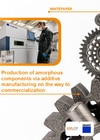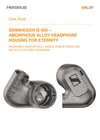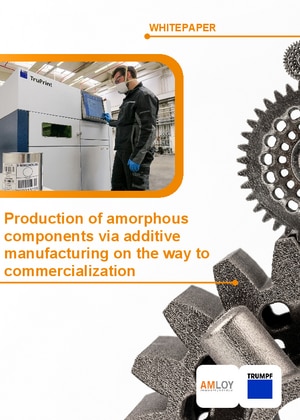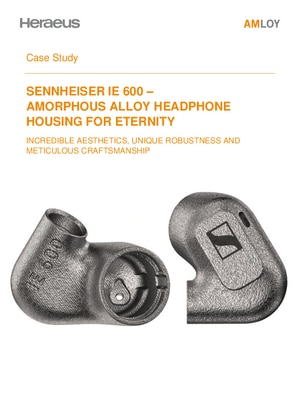Further information about amorphous metals can be found at: www.heraeus-amloy.com
These machines enable amorphous printing – even in series
A real dream team: 3D printing and amorphous metals. Or more precisely: the TruPrint systems from TRUMPF and the ultra-pure, specially optimized powders from Heraeus AMLOY. This is because the TruPrint 1000 and 2000 are particularly suited for printing amorphous metals. The small beam diameters generate the highest surface qualities. This simplifies the refinishing process of the applications or even renders them unnecessary. Excess powder can be prepared "inertly", that is, using shielding gas. This protects the material from harmful effects such as oxygen which is quick to react with metallic glasses. The laser generates a small weld pool with a beam diameter of 55 µm. The heat dissipates quickly and the critical cooling time of 200 Kelvin per second can be maintained. This means that the metal cannot crystallize. In the TruPrint 2000, two 300-watt lasers scan the entire build volume in parallel. This means amorphous components can be manufactured productively in series, and to a high quality standard. Thanks to Condition Monitoring, Powder Bed Monitoring and Melt Pool Monitoring, errors in the process can be detected early on. A perfected process.

Ask the Expert: our material specialist Christian Schauer explains
How does additive manufacturing make it possible to process amorphous metals? What amorphous alloys and material constants are available? You will find the answers to these and many other questions – corroborated with technical data – in our collective whitepaper by TRUMPF and Heraeus AMLOY.

Heraeus AMLOY and Sennheiser demonstrate what 3D printing, high-performance audio technology and the new amorphous alloy material class have in common. The shared path from the first prototypes to quality standards and validation iterations to the final state-of-the-art production process in additive series production of the IE 600 amorphous metal housing.






